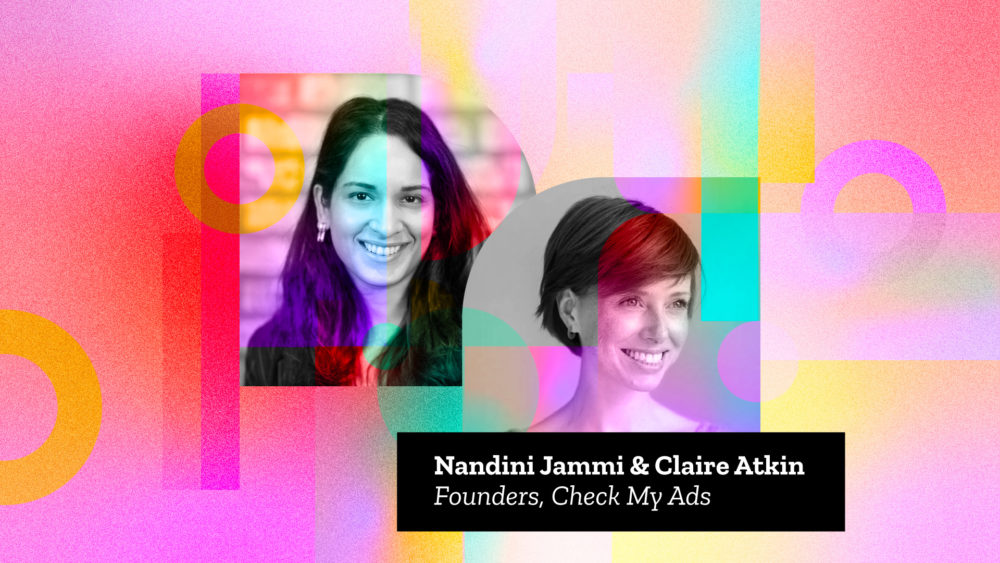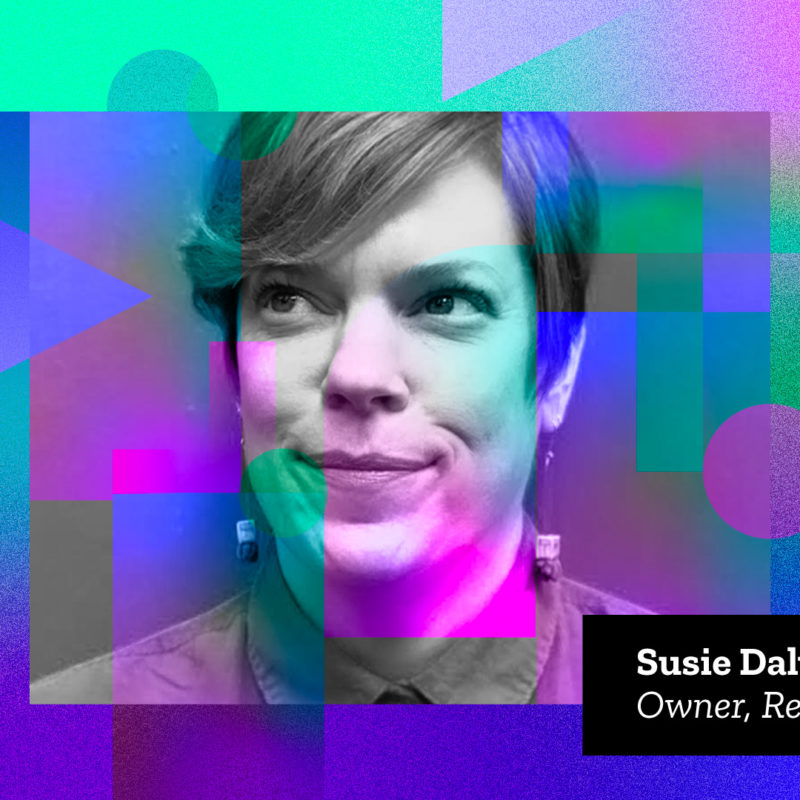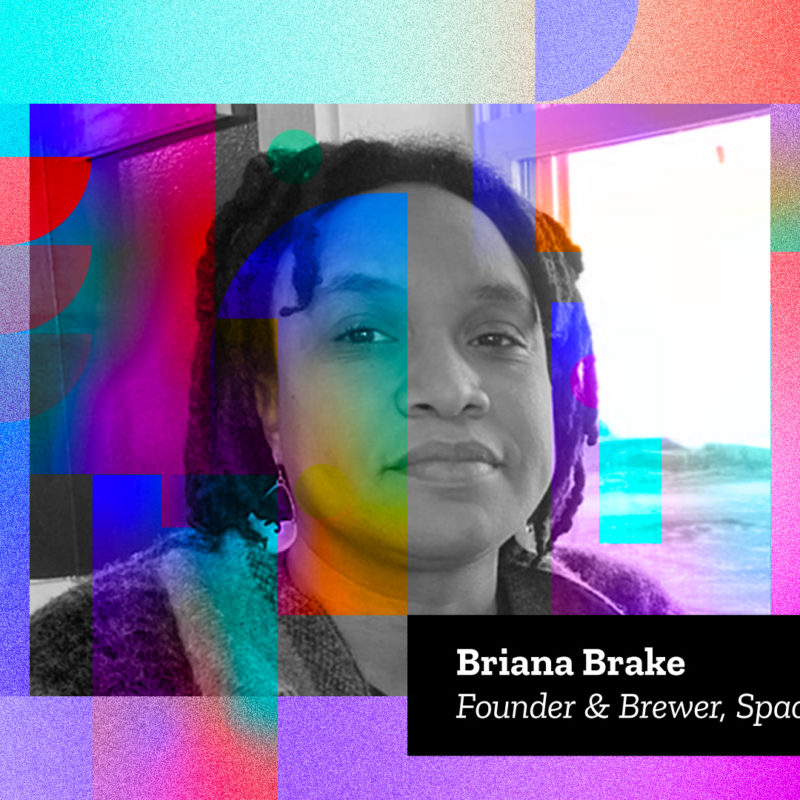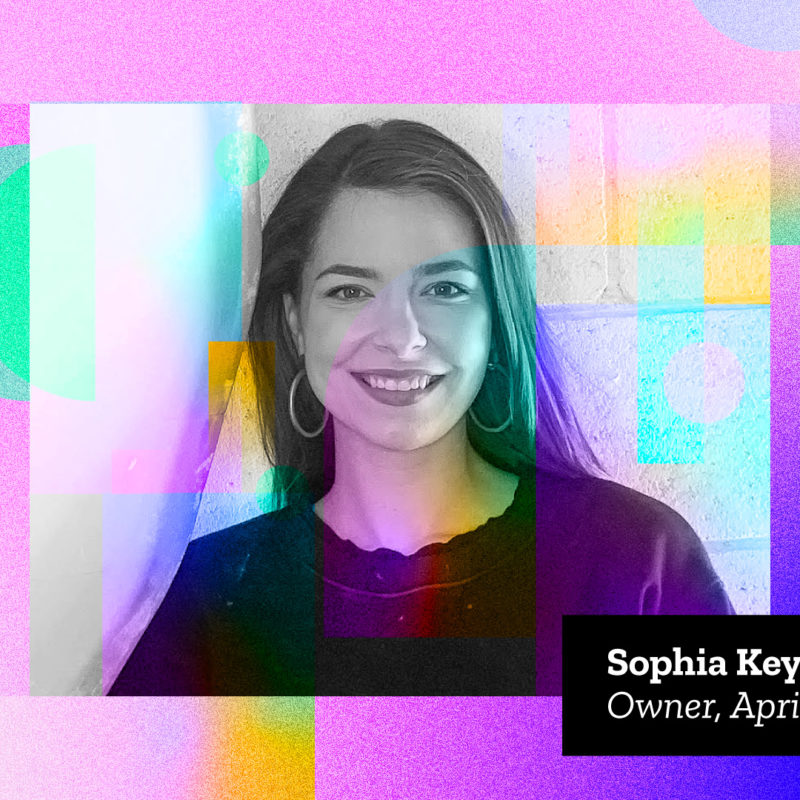In the fall of 2016, Nandini Jammi co-founded Sleeping Giants to expose for brands how their digital advertisements were showing up on websites that they didn’t intend their marketing efforts — or dollars — to support. In-house marketing teams were often shocked and confused to see their ads on websites that peddle disinformation and conspiracy theories and would immediately pull their ads from circulation. Over the time, however, Jammi noticed that the problem of misplaced ads persisted. She began to wonder why systemic change wasn’t happening in the advertising industry to better protect brands.
Claire Atkin was also growing alarmed about how disinformation was being used to influence elections, and the role that digital advertising played in spreading it. Jammi and Atkin saw an opportunity to team up. If the ad industry wasn’t going to change, they decided to tackle the problem from the brand side.
From their homes in Washington, D.C. and Vancouver, BC, Jammi and Atkin launched Check My Ads to expose where ads end up online unbeknownst to many marketers and, more importantly, guide companies on how to gain control over the ad supply chain to align their advertising dollars with their corporate values.
__________________
How do you describe your business, Check My Ads?
Nandini Jammi: Check My Ads is the first brand safety consultancy focused on helping Fortune 500 and global brands root out disinformation and hate speech from their digital media buys.
How did you get started?
Nandini: In November 2016, I co-founded Sleeping Giants. I was a tech marketer working for a small start-up. I visited Breitbart.com for the first time and noticed that it was plastered in ads from some of the biggest brands in the world. We started this campaign where we would take screenshots of ads on Breitbart and notify the brands that they were advertising and therefore funding the site. The companies would reply, sometimes within hours, to say that’s not what we want, we had no idea our ads were on there, that’s not what we stand for, and our reps are going to be taking these ads down.
Brands started to realize that their ads were in places that they had never imagined for themselves. The net effect, specifically around Breitbart, was that Breitbart lost 90% of its ad revenues for 2017 within three months of our campaign.
Claire Atkin: When we met, Nandini and I were both marketers for tech companies. And within the marketing space, we were both concerned about disinformation. Nandini had started Sleeping Giants, I had gone to Europe to study international election observation and media observation and when we met, it was like finally looking in a mirror. We saw ourselves in each other in a way that we hadn’t seen within the tech marketing scene before.
We riffed for months on ad tech, and we started to understand more and more about how it worked. A lot of people within the ad tech community actually reached out to us with concerns, which was encouraging. We realized marketers don’t know enough about digital advertising. The divide between marketing and advertising is actually quite a gulf, and so we started a newsletter called BRANDED in January of 2020.
BRANDED grew very quickly because we blew the whistle on blocking coronavirus. We blew the whistle on something called dark pool sales houses and on keyword blocking in general and semantic analysis blocking. We’ve broken three major stories in the last year. We have thousands of subscribers. Then five months after we started BRANDED, we launched Check My Ads.
Can you explain how ads show up on, say, a mainstream fashion website versus Breitbart?
Nandini: If you’re using Google [Ads platform], your ads are by default appearing anywhere on Google’s inventory, unless you have deselected certain categories. There are certain categories that ad exchanges have that you can deselect from around gambling, adult content and violence. But they don’t have one for disinformation.
Why do you think that is?
Nandini: Because they don’t want to make those judgment calls on what disinformation is.
What they, and what all, ad exchanges have done at this point is provide marketers with tools and so-called solutions to help them make their own choices, but the choices are so convoluted, and disinformation is such a complex subject, that no marketing team, even in the best resourced companies in the world, could manage to keep up with that level of change.
Do you think that’s due to the volume of disinformation increasing over time?
Claire: The problem is not that there’s more and more disinformation, although there is. The problem is that the controls that the ad exchanges have offered to us as marketers do not match the brand safety requirements that they purport to. There has been, as far as we can tell, a woeful misunderstanding of what brand safety tech tools should be doing. So, instead of saying Do you want to stay away from disinformation sites, they say, do you want to be away from mentions of coronavirus or sensitive social issues? What that does is keep marketers away, not from publishers that are brand unsafe, but from the news.
You mentioned that ad tech people have reached out with concerns about what’s happening in their industry. What did they say?
Claire: Their main concern was that the ad tech space is full of people who are in it to serve themselves, and they’re not thinking of the larger picture. There are so many experts within ad tech, so many people who understand the technology so well, but it’s almost as if they haven’t lifted their head up to look at the consequences.
Nandini: And some have, and they don’t know what to do. They come to us.
Can you walk us through Check My Ads’ services?
Claire: We have a series of trainings that we work with advertisers on. Usually, it’s comms teams, brand teams and marketing teams all together in one series. At the end, we collectively build brand safety guidelines. That document is a longer-form spec sheet that describes exactly what is and is not appropriate use of a brand’s ad budget. They use this document to communicate their brand safety guidelines down the media supply chain and say: We want to be here, please focus on this, and we’re definitely not okay on these types of publications, and it’s on you to figure that out.
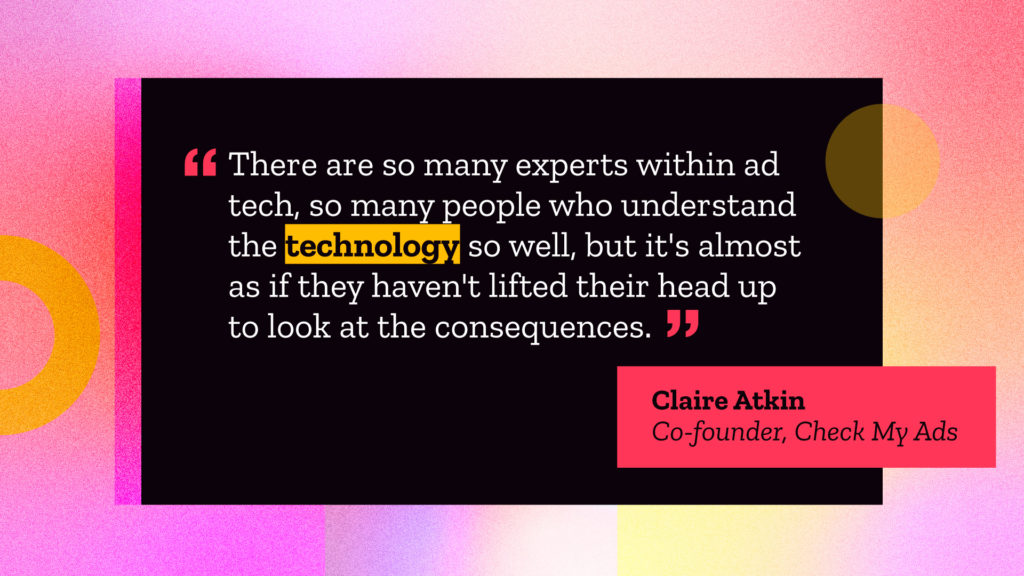
With the economy having been in flux over the last year, and ad dollars being reduced, how has the pandemic impacted interest in your services?
Nandini: We launched Check My Ads a couple months after the pandemic started with the expectation that companies would come to us concerned that they are being duped and spending too much money. And not a single company signed on with us for that reason.
The first companies to sign with us were the ones concerned about the Facebook ad boycott. They wanted to know what to do about it. They’d been on autopilot for years with their marketing spend, and for the first time they were lifting their heads up to ask, What does this Facebook ad boycott even mean? Why do all these civil rights groups want us to boycott Facebook?
They had to really understand what’s happening, how consumers feel about it, and what their role is in it, and then make a very big decision on whether they want to participate. These are really big existential questions for marketing teams. It turns out what clients wanted from us was guidance on how to navigate an unpredictable world. We come to the table with the knowledge that if you bring the right approach, you can actually not just survive this unpredictable world but you can thrive in it. And that’s by being responsive to your customers to be answerable to your customers.
Claire: Exactly, and this is part of a larger shift within marketing. We were taught as marketers entering the tech marketing space that analytics is everything, measure everything, it’s all about the KPIs. What got lost within that conversation is the power of brand. As digital advertisers, it’s very easy to forget that brand is everything and brand comes down to how you are answerable to all of the things that Nandini just spoke about, but it also comes down to where your ads are placed. We spend all this effort making the copy perfect and the design perfect, and then we put it in places where people are calling for violence. The idea that brand is somehow secondary to KPIs is a false one.
Can you share more about your online presence and the community you’ve developed?
Claire: We have the BRANDED newsletter, and that is growing. We are also on Twitter and LinkedIn. We are also in the midst of fundraising for a podcast called “Immeasurable” where we’ll tell the story of how ad tech broke society and how we can fix it.
This is a $300 billion industry. At a time when democracy is in crisis, and when disinformation is louder than ever, we need to be paying attention to where the money is flowing and who is in charge of what gets monetized, and what gets defunded.
How do you balance running a business online and the demands of people being able to reach you anytime 24-7?
Claire: We’re learning.
Nandini: Claire is making us take one week off every quarter.
And we ask to be paid for pretty much everything we do now. We don’t do pick-my-brains anymore. Unless it’s for women. We prioritize it for other women who are trying to break into the industry or want our advice or help or support. We’re always looking to find ways to help other women.
Claire: Nandini and I are close friends as well. We always check in on each other. We emotionally support each other. We’re very grateful for the other’s skills. We are a strong partnership. I know that there’s no way either one of us could do this on our own.
Being online as much as you are, and with your company dedicated to an online space, do you ever have concerns about your privacy or your safety online?
Claire: Nandini has been threatened. Recently she received a legal threat from the person who — she screenshot the threat and then put it on Twitter — then he claimed that he lost business and tried to sue her.
Nandini: Or that he was gonna sue me. It was a demand letter.
Claire: Nandini is just incredibly courageous when it comes to these things, and she’s taught me to be courageous as well. We’ve both been yelled at for things that to us don’t make logical sense. People will claim that we’re infringing on free speech or the free market, and we have strong business answers to both of those. And then, sometimes there’s misogynistic and racist language, and usually we ignore it.
Nandini: Sometimes we use them to make a point. I think it says a lot more about them than it does about us. We had a guy who was executive level at a global ad agency come to my LinkedIn and basically call me a moron and just sort of insult me. I didn’t even know who he was at the time. I talked right back to him. Claire and I are so well-read on the issues that if you want to come for us, we will come right back at you.
Claire: I have to say, those things suck, but in terms of proportion, we receive so much support, especially private messages from people who work at the companies we criticize. And that speaks volumes.
What did you learn in 2020 that you’re carrying through into 2021?
Claire: For me, the strongest thing that we learned is that the foundational pillars of marketing have been forgotten within digital advertising. And that moving forward, we believe advertisers are going to start to realize that they need to partner explicitly with strong publisher brands. Moving forward, we would like to see advertisers be really specific about where they want to be, and we could even go so far as to see an advertiser say we are proud to support the news within advertisements themselves.
Let’s shift gears into some quick response questions.
What’s a typical breakfast?
Claire: Porridge.
Nandini: Peanut butter and toast.
Dogs or cats?
Claire: Both. I don’t see why we have to choose.
Nandini: Dogs.
Car, bus, bike, walk?
Claire: As an urban geographer with a master’s in geography, I strongly believe in a healthy public transit system.
Nandini: I concur.
Where do you get your news?
Nandini: Twitter.
Claire: We both have subscriptions to global news outlets. We get a lot of what we know from newsletters and blogs and white papers and reading academic research.
What’s the last thing you saved to Pocket?
Claire: It was the Election Integrity Council’s final report that just came out.
Nandini: The Wired smoking gun and Facebook antitrust case article.
What’s an internet gem that you’d like to share?
Claire: The global disinformation research page is a fascinating deep dive into how ads are funding disinformation. If you click on the reports, you can see the anti-vax reports, anti-semitism reports, anti-coronavirus reports… you can see all kinds of disinformation outlets and who is funding them.
Nandini: The Pessimists Archive. It’s a Twitter account that shows people being afraid of new things when they were first introduced. It reminds us that we don’t need to fear innovation.
What women inspire you right now?
Claire: Is this a list? Joan Donovan, Brooke Binkowski, Ifeoma Ozoma, Talia Lavin, Emily Atkin, Katie Martell, Timnit Gebru, Shoshana Wodinsky, Wagatwe Wanjuki… I mean we could just go on and on… Alexandria Ocasio-Cortez…
Nandini: We’re really inspired by Elizabeth Warren.
Claire: More of our clients are women than not, and sometimes we’re on calls with 15 people, and they’re all women. As a tech person, it is just so foreign to me to be on to be on that kind of call. These are the people who are making the changes that are necessary, and that’s really empowering.
What’s something about yourself that people will be surprised to know?
Claire: We’re both kind of like “tomboyish” in our attitudes about adventure. I’ve been skydiving and done bungee jumps. We like to have a ton of fun, and we think big and we live big and maybe that’s not surprising, but I think it helps describe us.
Nandini: I believe the only salad dressing worth eating is olive oil and lemon. All the other salad dressings are garbage.
———
This year for Women’s History Month, Mozilla is talking to women business owners who created online businesses or adapted their online businesses during the pandemic. A year after the United States went into lockdown, Mozilla spoke to the women behind five businesses on the celebrations and challenges of having an online business in 2020. Check back each Monday in March for a new interview.
This interview has been edited for length and clarity.
